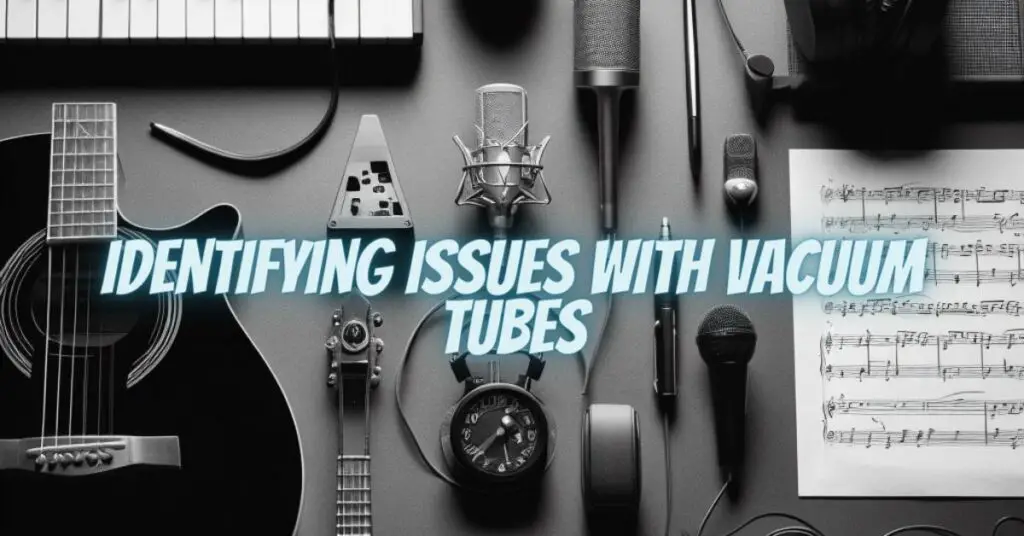Tube amplifiers, often referred to as valve amplifiers, are beloved by audiophiles for their warm and distinct sound. However, like all electronic components, vacuum tubes, or tubes, can deteriorate over time, leading to a decline in audio quality. In this article, we will explore how to tell if tubes are bad in your tube amplifier, the common signs of tube troubles, and the steps to diagnose and address these issues.
Understanding Tube Amplifiers
Tube amplifiers utilize vacuum tubes to amplify audio signals. These tubes, though less common than their solid-state counterparts, are known for their unique characteristics and sonic qualities. However, tubes can degrade and eventually fail, impacting the amplifier’s performance and sound quality.
Signs of Bad Tubes
Here are some common signs that your tubes may be going bad:
- Reduced Output: A noticeable drop in the amplifier’s output level can indicate tube problems. You might need to turn up the volume higher than usual to achieve the same sound level.
- Distorted Sound: One of the most apparent signs of failing tubes is distortion. This may manifest as crackling, hissing, popping, or other undesirable sounds during playback. The distortion can occur gradually or suddenly.
- Imbalanced Sound: A mismatched or faulty tube can cause channel imbalance, where one channel (left or right) produces noticeably louder or quieter sound than the other.
- Noisy Operation: Tubes nearing the end of their life may produce noise, such as hum, buzz, or microphonics. Microphonics occur when the tubes pick up vibrations and transmit them as sound.
- Intermittent Issues: Tubes may exhibit intermittent problems, working fine initially and then failing after the amplifier warms up.
- Dim or Flickering Tubes: Visually inspect the tubes. If they appear unusually dim or flicker, it may indicate problems with the filament or cathode.
Diagnosing Bad Tubes
To diagnose bad tubes in your amplifier, follow these steps:
- Visual Inspection: Examine the tubes for signs of physical damage, such as cracks, breaks, or discoloration. If any tubes appear damaged, they likely need replacement.
- Tube Swap: Some amplifiers have multiple tubes of the same type. Swap the suspect tube with a known good one of the same type and observe if the issue persists. If the problem moves with the tube, it’s likely that the swapped tube is faulty.
- Bias Adjustment: In some tube amplifiers, you may need to check and adjust the bias setting. Incorrect bias can cause tube issues and should be addressed as part of regular maintenance.
- Tube Tester: Using a tube tester, you can check the emission, transconductance, and other characteristics of each tube. Tubes that fall outside acceptable parameters may need replacement.
Addressing Bad Tubes
If you determine that your tubes are indeed bad, here are the steps to address the issue:
- Replace the Faulty Tube: Once you’ve identified the problematic tube, replace it with a new, properly matched tube. It’s essential to ensure the replacement tube is of the correct type, and if necessary, bias it according to the amplifier’s specifications.
- Regular Maintenance: To prevent future tube problems, perform regular maintenance, including checking bias settings, cleaning connections, and ensuring proper ventilation for the amplifier.
- Consult a Professional: If you’re unsure about diagnosing or replacing tubes, or if your amplifier has complex circuitry, it’s advisable to consult a professional technician who specializes in tube amplifiers.
Tube amplifiers offer a unique and cherished sound, but their performance can be compromised when tubes begin to deteriorate. Knowing how to tell if tubes are bad and how to diagnose and address tube issues is essential for maintaining the best sound quality and prolonging the life of your tube amplifier. With careful observation, troubleshooting, and the right replacements, you can keep your tube amplifier delivering the warm and distinct sound it’s known for.

